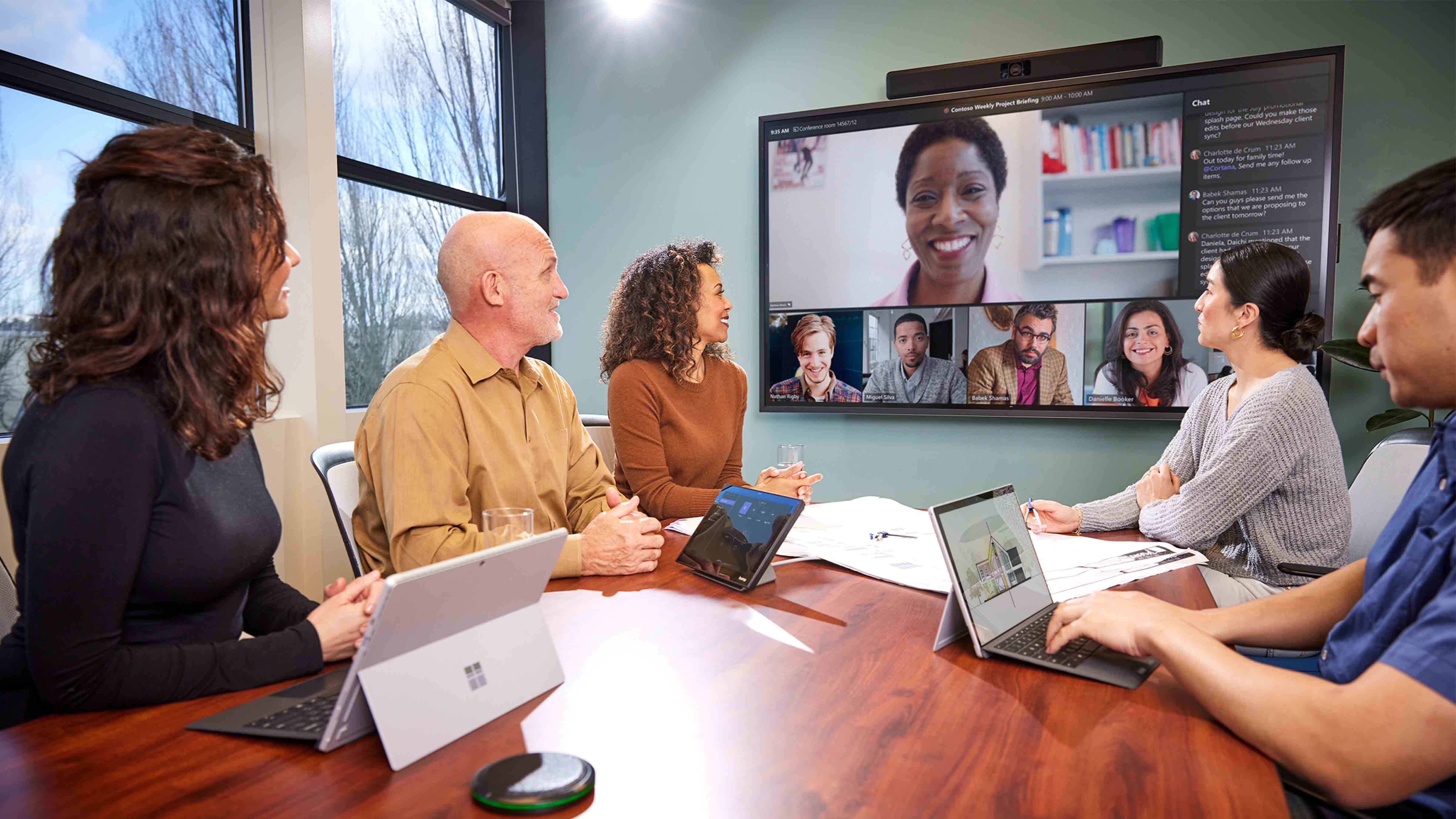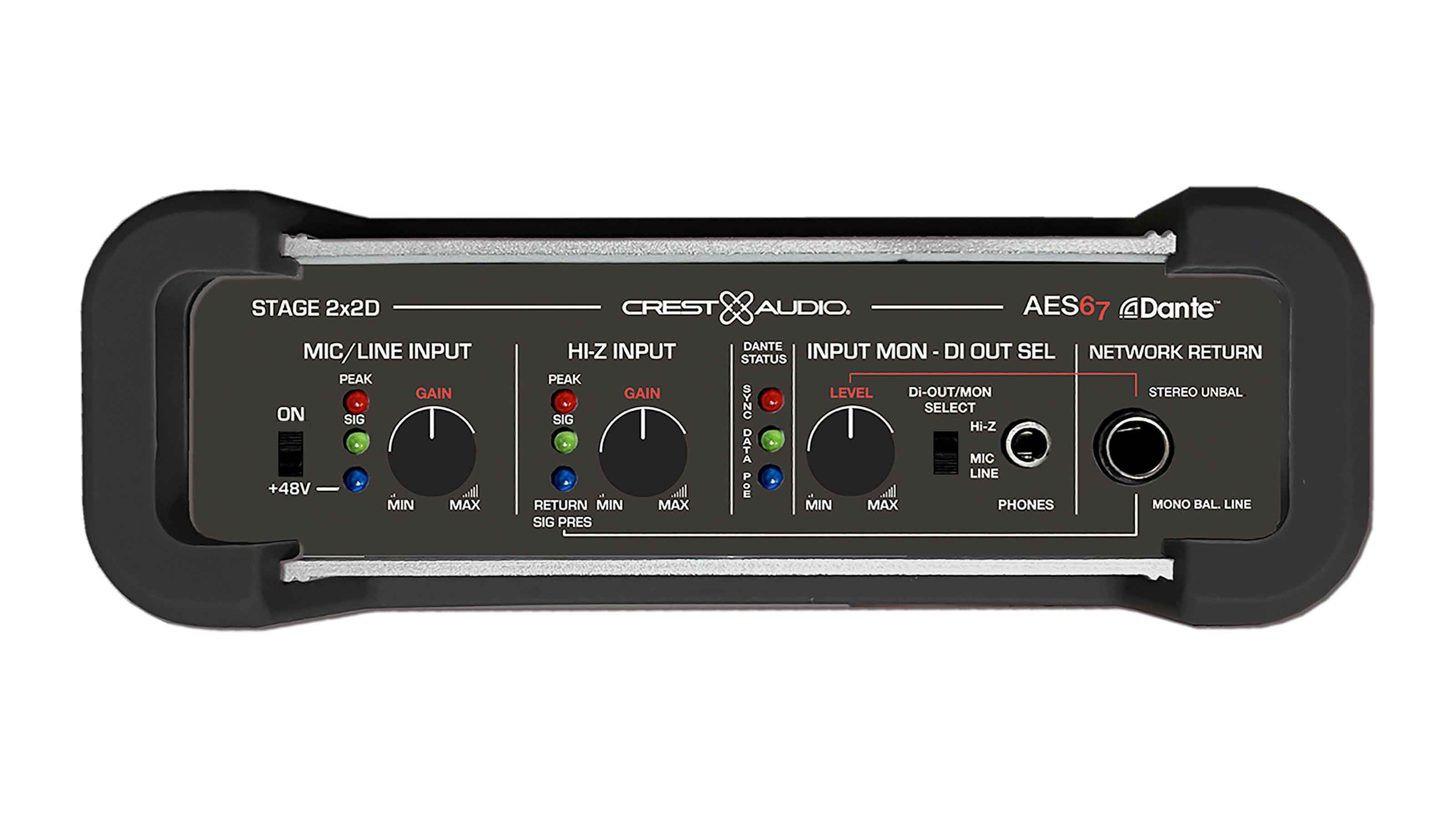Keeping Up with Hybrid
New research shows the importance of quality AV solutions for effective communications and employee engagement.

Meeting equity is not a new idea. Since the pandemic, Pro AV technology and IT teams in office spaces and classrooms have been trying to solve the riddle of how to keep employees engaged in hybrid meetings—whether in person or remote. And while each passing year seems to get closer to goal, we aren’t there yet.
“The bar for an excellent audio/video experience at work is currently higher than it ever has been,” said Sam Read, CTS, PNW area operations manager for Avidex. “Integrators speak of the latest and greatest in terms of acoustic echo cancellation [AEC] technology, camera/sound bars, and beamforming microphone arrays, when in fact most people can get a better audio/video experience out of the cell phone in their pocket. Employees expect that a valued conversation they can have over video call with a loved one should be equally as good as a hybrid meeting with their company.”
Quality AV for All

How do you better connect employees who are distributed all over the country or globe? Vizrt recently conducted a study on hybrid workflows, and two startling numbers stood out: 69% of employees feel the quality of communications from their company affects how engaged they are as an employee, and 40% of employees would consider leaving their company if its video communication efforts were poor.
“Over the past five years, demand for remote connecting technologies skyrocketed, but that demand came from necessity," explained Chris Black, global head of brand and communications for Vizrt. “Now, we can meet face–to–face again … yet there are no signs of the hybrid working model slowing down. With this in mind, this research was conducted to understand how hybrid working has affected communication, and how the demands for effective communication have shifted.”

Biamp also completed a survey last year of 2,400 workers across North America and Europe. Respondents were divided into two groups: non-managerial “end users” of conferencing technology and “decision makers” who set the course for a given organization across human resources, technology, and operations management. “Both groups relayed that great sound trumps video—videoconferencing solutions need great sound to be effective above all,” noted Joe Andrulis, EVP of corporate development at Biamp.
“Obviously, intelligible audio is of the utmost importance,” added Ashish Maru, director of AV technology at Red Thread. “Without that a meeting can’t happen, but as far as other audio features that go beyond just intelligibility—like Dolby sound, immersive audio, or spatial audio—we have not much adoption or need for them. However, we have seen much more progress toward enhancing the user experience via video with camera features like auto tracking, presenter tracking, group framing, speaker tracking, etc.”
A daily selection of the top stories for AV integrators, resellers and consultants. Sign up below.
"Clear video and audio open the door to productive and equitable experiences," agreed Nathan Coutinho, director of business strategy, Logitech. "However, we’ll venture to say that clear audio is the more important of the two. Without audio, there is no meeting, but the same can’t be said for video. Crystal-clear audio allows participants to focus on content and collaboration rather than struggling to understand speakers."
[SCN Hybrid World: Out of Sight Sound]
The answer sounds simple: To connect people here, there, and everywhere, a conference room must be equipped with the right AV solutions. Having the right solutions is not an extravagance for employees, it is a necessity to bring them into the conversation.
“Quality audio and video are crucial to engage hybrid workers,” Black said. “The survey we conducted revealed this significantly impacts employee satisfaction. For effective employer communication, 85% of those surveyed agree that video quality and 88% agree that audio quality is important. But quality audio and video can also bring the hybrid experience a bit more entertainment, if paired with certain elements like AR graphics. Elevating production in a simple way with graphics can significantly impact viewer engagement.”
Tools of the Trade

Many hybrid workers are typically granted the same equipment for their remote work: a laptop with an internal camera, speakers, and microphone. This might be excellent for the remote worker, but it can also be very poor for hybrid meetings. A little education for the hybrid worker could go a long way in getting the setting just right.
“Organizations could greatly benefit from providing documentation to remote employees about how their room setup impacts the quality of meetings,” said Read. “With some simple “dos and don’ts” documented to these employees on how to set up their working environment, basic modifications to lighting, camera position, and room acoustics can provide a drastic improvement to the hybrid experience at minimal cost to the employee and organization.”
Biamp's 2023 survey showed that one of the most desired features, besides effective audio and video, was for remote attendees to feel as involved as those in the physical conference room. As Andrulis said, AI and the widespread adoption of UC platforms are improving the situation.
“But we're not quite there yet," he added. "The key to creating true meeting equity lies in implementing conferencing systems that deliver experiences that are simple, fast, and incredibly reliable. An effective solution requires more than just the usual hardware—microphones, loudspeakers, and video cameras. It calls for an integrated AV solution with intelligent features, including AI, that enhance the experience for both in-room and remote participants.”

Auto tracking in both microphone systems and videoconference cameras is imperative to keep active speakers in view for the remote participant. But what happens when participants turn their heads to speak to another person in the back of the room?
"[That's] where we took a disproportionately bigger leap in getting closer to meeting equity: Smart Switching," Coutinho said. "It uses adaptive intelligence to choose the best view between the camera on the table [Sight] and the camera at the front of the room, tracking conversations as they move between participants and consistently maintaining the best angle of in-person interactions as the conversation flows between in-room and remote participants."
The Road to Equity

Is there an actual path to meeting equity between the remote and in-person worker? “I am not sure if there will ever be true equity between local and remote experience,” Maru opined. "There are too many variables. The in-person meeting experience is about much more than the technology—it’s the connections before and after the meeting, too.”
Some are more optimistic, but it will take more than just the “right” technology. Don't overlook the spaces themselves. As businesses continue to reduce their physical footprints, Andrulis said their leaders to be more intentional and strategic with how they utilize individual offices, shared workspaces, and conference rooms. As a result, many organizations are adopting hoteling strategies.
“Instead of having dedicated workstations, employees reserve desks or meeting rooms as needed," Andrulis noted. "This approach allows for maximum flexibility, enabling workers to choose the most suitable workspace based on their specific tasks and requirements.”
“The key to creating true meeting equity lies in implementing conferencing systems that deliver experiences that are simple, fast, and incredibly reliable.”
Joe Andrulis, Biamp
As far as what needs to be done in advancing hybrid videoconferencing technology, Read thinks an emphasis needs to be made at the intent of a design of what experience the end user is looking to gain from a hybrid meeting. “Putting the needs of the end user in context of the developments in AI and video teleconferencing allows for the best possible meeting equity through a conferencing system,” he said. “Creating an equitable hybrid meeting is very possible with our current state of technology; asking the right questions leads integrators to providing the expected quality from their customers.”
"As technology walks toward becoming fully software-based, and therefore relies on standard computer equipment, it’s becoming easier to properly equip hybrid workers," added Black. "This is because of the accessibility computers provide, sure. But when technology is designed to be used universally, it means making it easy and efficient enough for someone with little to no knowledge to pick it up."
[Viewpoint: Office Buzz or Buzzkill]
There is still much work to be done, according to Coutinho. "The evolving nature of dynamic workplaces will continue to present new obstacles for meeting equity," he added, "but our industry continues to innovate toward the all-important goal: making everyone feel seen, heard, and engaged."

Wayne Cavadi is the senior content manager of Systems Contractor News. Prior to taking a leap into the Pro AV industry, Wayne was a journalist and content lead for Turner Sports, covering the NCAA, PGA, and Major and Minor League Baseball. His work has been featured in a variety of national publications including Bleacher Report, Lindy's Magazine, MLB.com and The Advocate. When not writing, he hosts the DII Nation Podcast, committed to furthering the stories and careers of NCAA Division II student-athletes. Follow his work on Twitter at @WayneCavadi_2 or the SCN mag Twitter page.
